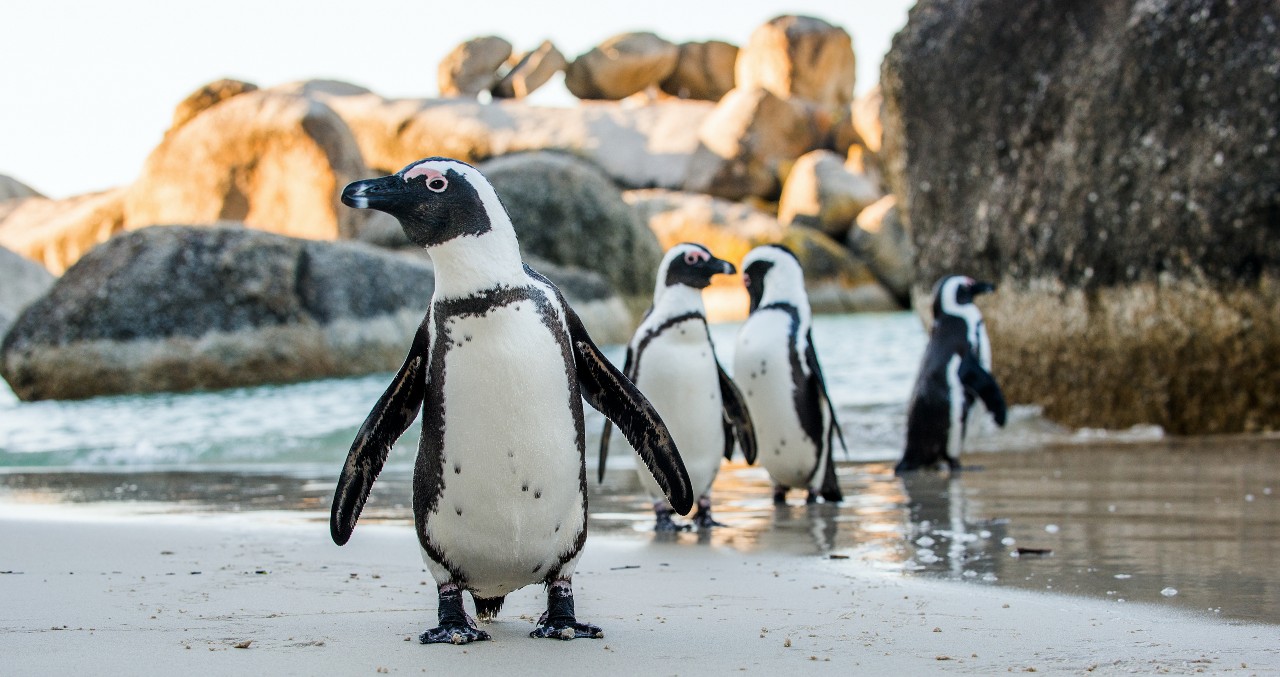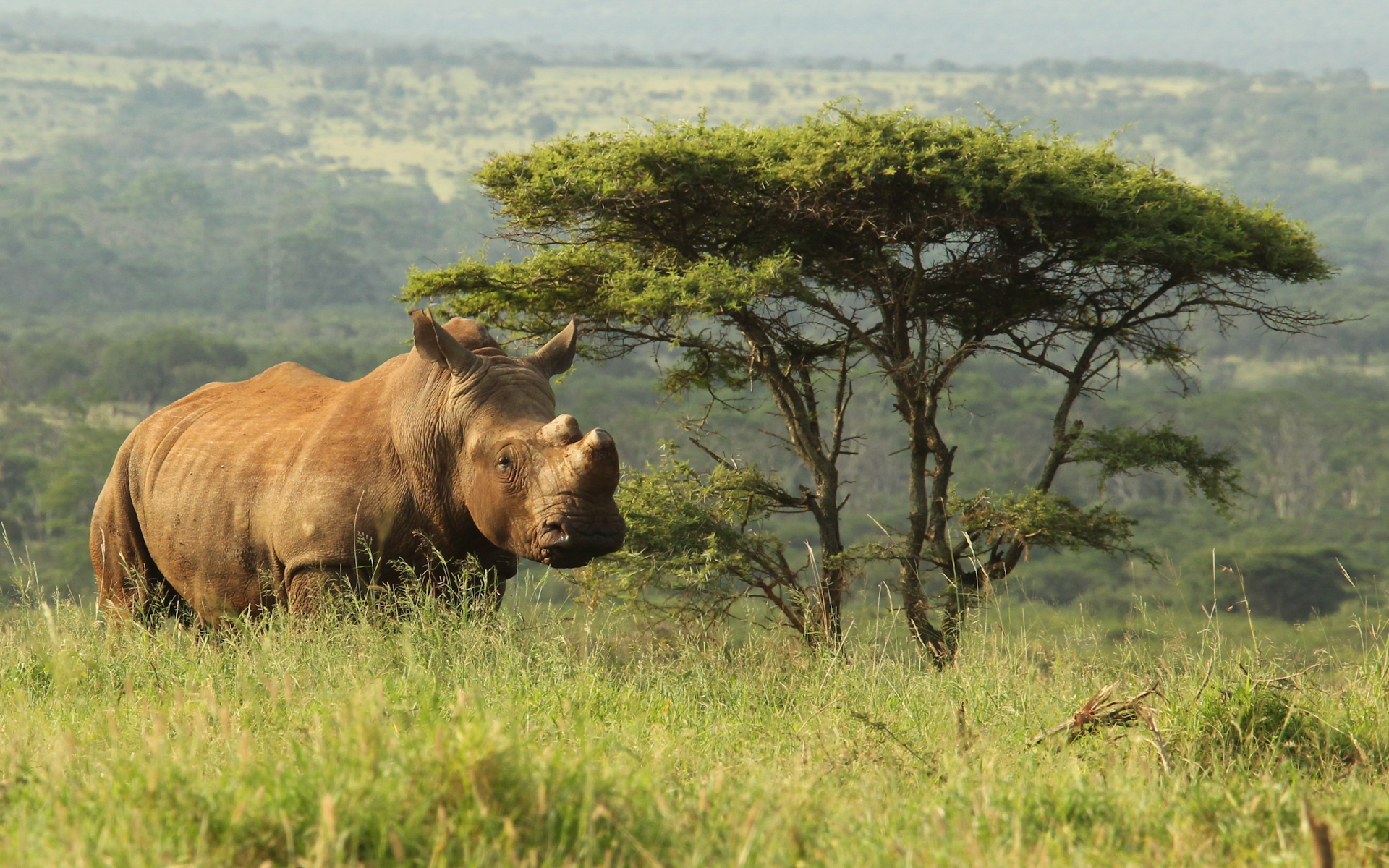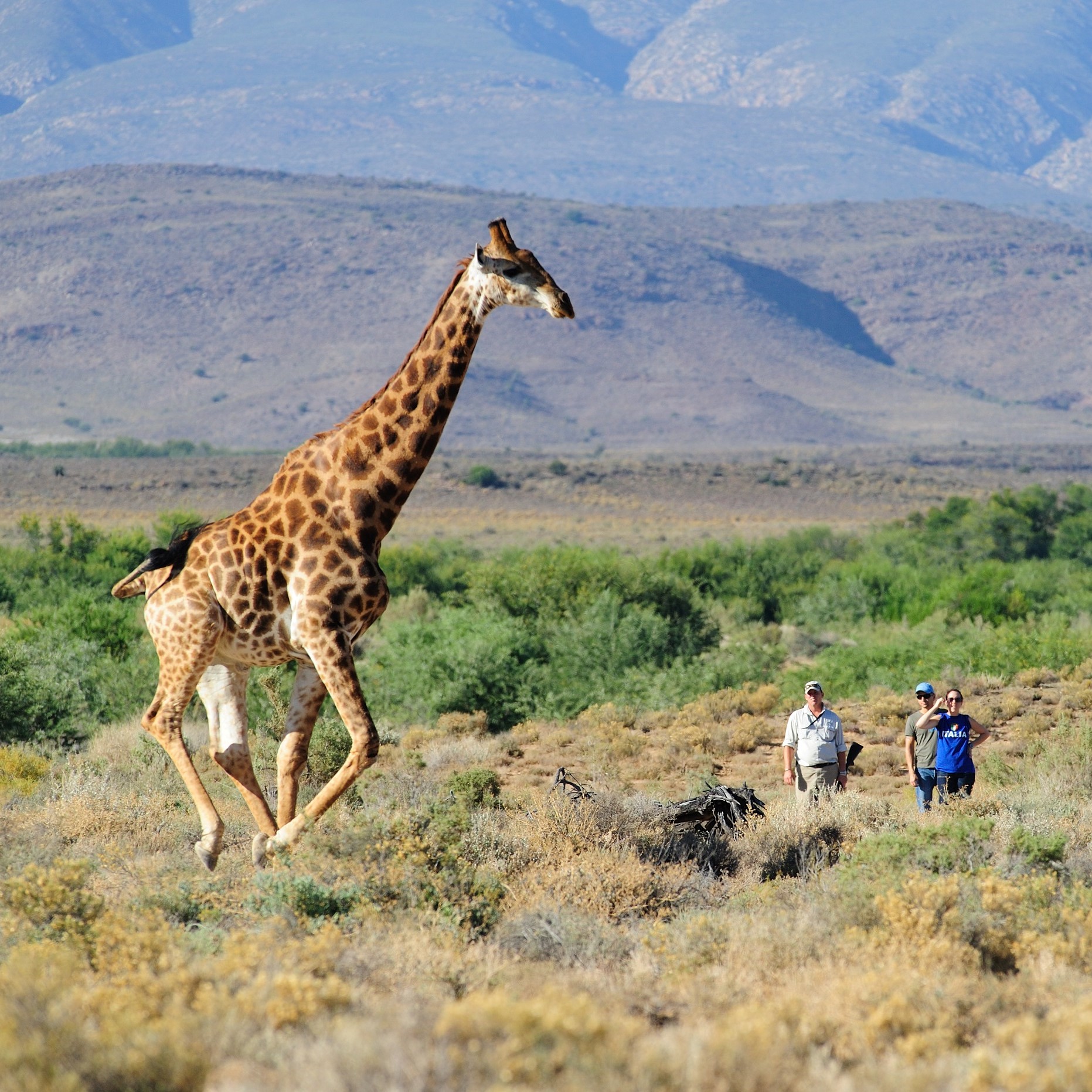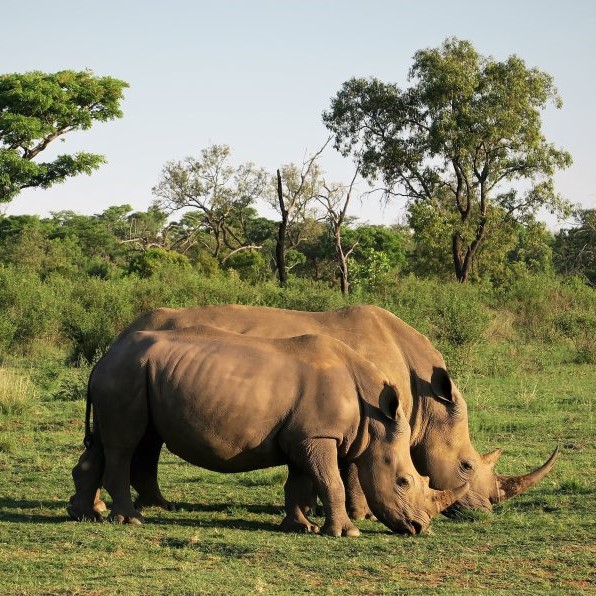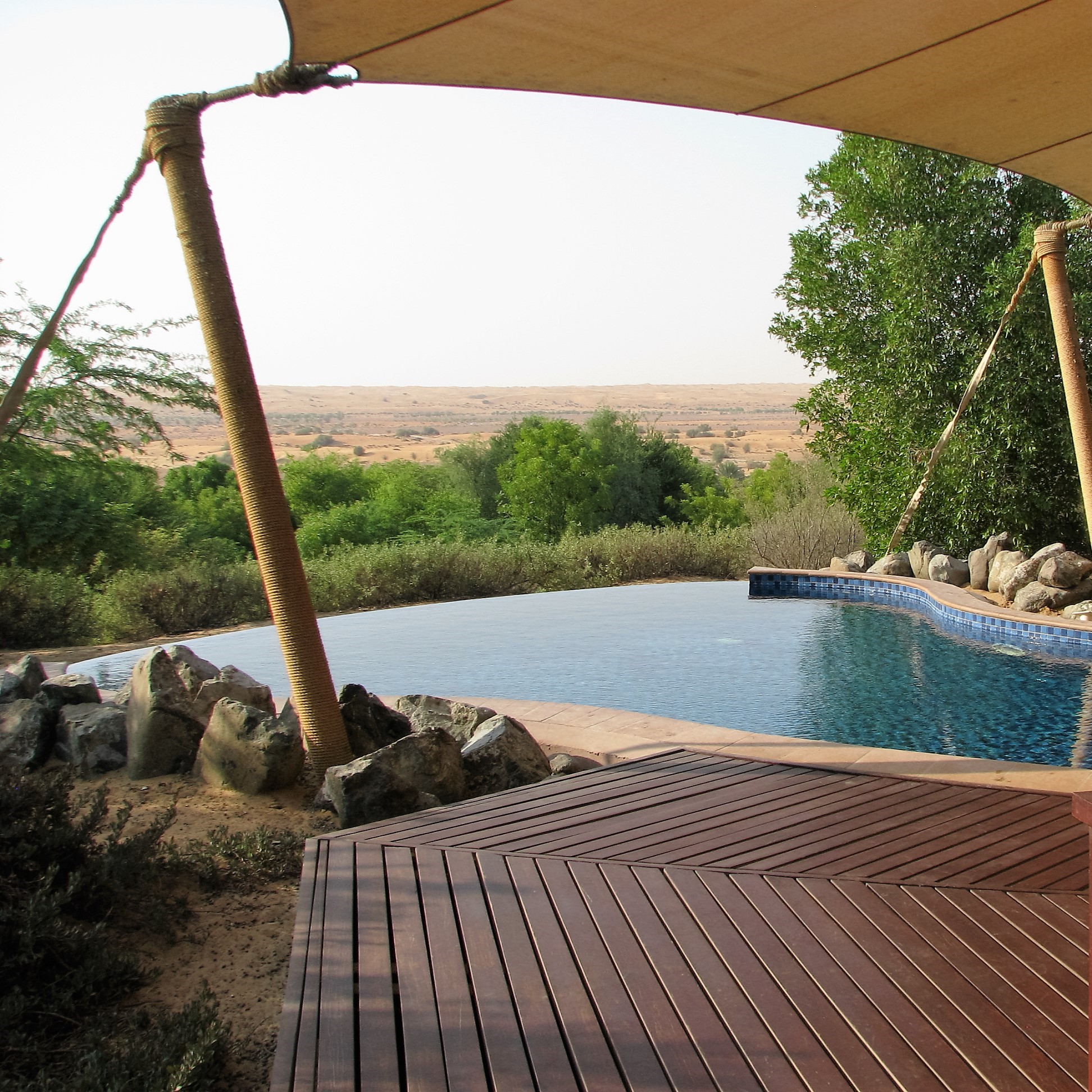Rhino dehorning, a save-the-rhinos success story you never knew about – Eight years ago, Lawrence Reed was living a regular family life with his wife, Kerry, and two daughters in the quiet suburb of Yellowwood Park in Durban. A former security officer, he’d never really given much thought to the rhino poaching crisis in South Africa. However, in August 2014, he was bounding across the acacia plains of Tala Collection Game Reserve in KwaZulu-Natal hot on the trail of armed rhino poachers.

To date, he and his team have helped local law enforcement deter countless attacks by providing an ongoing strategy to help combat poaching and conduct regular dehorning and microchipping procedures. Their consistent efforts have revived the white rhino population within the Reserve.
“If you had told me that I would be living on a reserve, working to stop the extinction of a species, I’d never have believed you,” Lawrence says. Whether doing so fulfils his sense of purpose in the world, provides an opportunity to put his skills to use, or is simply because it’s the right thing to do, it’s hard to pinpoint one reason why he does it. Perhaps, as I can only imagine, it’s a mix of all three.
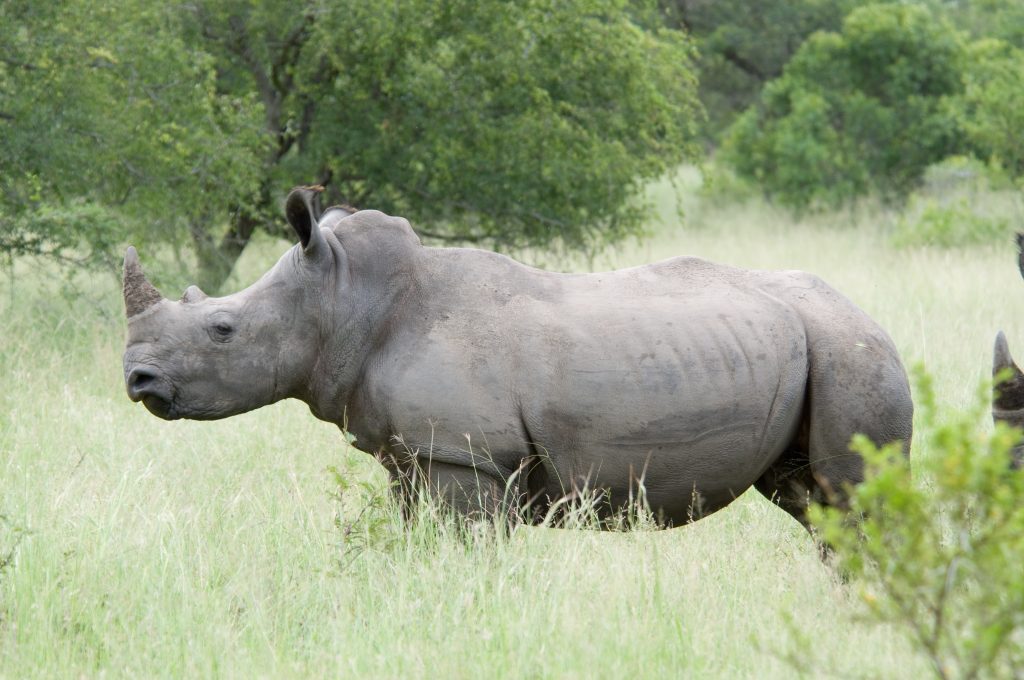
His connection to Tala first began when he heard of the senseless killing of two female white rhinos and a third, which was being dehorned and needed immediate medical assistance. “That’s what prompted me to approach management to ask them if they needed assistance with security which soon led to the inception of Rave Rhino,” he explains.
Formed with three additional directors – Lee John Versfeld, Wayne Axford, and Warren Julie – who have extensive police and military expertise, Rave Rhino consists of an anti-poaching unit based at Tala that functions 24 hours a day.
“As an NPO, we rely heavily on donations and funds we receive from individuals of the public, who can also observe the dehorning process,” Kerry explains. Aside from being Lawrence’s wife, she has continued to play an integral part in the daily operation of Rave Rhino. “It’s high risk and not an easy job, but everything we do, we do to the fullest of our capability.”
The same can be said for the rest of the team, consisting of three permanent staff members, Tala rangers, general volunteers, and two free-running Belgian Shepherds: Meisiekind and Shadow.
Giving it horns
Following a recent invite to visit Tala in October by the General Manager, Greg Allan, I also was fortunate to be given the rare privilege of experiencing a scheduled dehorning first-hand on the 20th of October.
After a comfortable night’s rest at the exclusive Leadwood Manor House (where I was welcomed by a towering giraffe!), I arrived at the meeting point where I was introduced to several Rave Rhino members and a few South African visitors who, like me, were also there for that ‘once-in-a-lifetime experience’.
Following a briefing by Ryan van Deventer, a veterinarian working closely with Rave Rhino, we embarked on our ‘mission’ to track, dart and dehorn a young male bull. At only two and a half years old, Valentine (born on Valentine’s Day) currently weighs a whopping 950 kilograms, roaming the Reserve with his little sister (still to be named), and mother, Madlebe – who had miraculously survived an attempted poaching in 2014.
“Each rhino must have their horns removed to deter poachers every 19 months,” Ryan explained. “The most efficient method to conduct the procedure is darting the rhino with etorphine which is ten times stronger than morphine. It may seem quite rudimentary, but the most efficient method to remove the horn is by way of a chainsaw and grinder. It doesn’t hurt them. Think of it like clipping your fingernails.”
Following each dehorning at Tala, a DNA sample of the horn is entered into the RhODUS (Rhino DNA Indexing System) system and database before being carefully transported to a secure and undisclosed location.
As we disembarked to locate and dart Valentine – visitors in the main vehicle, Rave Rhino members spread across individual vehicles – the energy was palpable. What was most impressive during this experience was the teamwork. Everyone flows together like an orchestra, with a frequent and succinct chorus of commands back and forth over the radio:
“They’re heading towards the runway but moving slowly. Over.”
“Affirmative. I see them.”
“He’s moving in the direction of the tower.”
“Keep him moving. Over.”
But even with all their meticulous efforts, even the most prepared team can be thwarted by nature. Although the dart was deployed, piercing Valentine’s skin, the morphine did not inject. Concerned that they would put the rhinos under stress with a second attempt and the heat of the day settling in, an executive decision was made to postpone operations.
“It’s the reality of what we do and a reminder that there are no guarantees when it comes to wildlife,” Kerry explains. “Sometimes the weather can affect the dehorning procedure, the availability of the vet, or even the unpredictability of the animals. We always put their wellbeing first, regardless if we have a group from the public here to observe.”
The dehorning continues
With a message from Kerry informing me that Valentine’s rescheduled dehorning was scheduled for the following week, I made my way back to Tala on the 26th of October. However, instead of sunshine and blue skies, the weather was grey and rainy, creating the additional challenge of slippery roads and poor visibility.
After hot coffees, scones and cream supplied by the Tala team, we found ourselves back in the chase, the Rave Rhino team and Ryan working together to track and dart Valentine:
“They’re moving towards your unit.
“We have him. Clear sighting”
“Dart’s in. Over.”

Of course, what struck me most was the efficiency of the dehorning procedure, Ryan working away as if he was carving a work of art with precise and meticulous care. To reduce the stress, Valentine was blindfolded and given earplugs. However, watching him quivering on the ground (a side effect of the etorphine), I experienced many different emotions: First, the anticipation of what’s to come, then the adrenaline rush and excitement of being close to a wild animal, followed by appreciation felt for the Rave Rhino team and sadness over the senseless poaching and selling of rhino horns.


As I held the chunk of Valentine’s horn in my hand, best described as a gemors of tangled hair and mud, the question I found deliberating was, ‘How could this be the cause of so much greed?’.
The dehorning process is a strange position to be in – an unnecessary situation that has become necessary. That to give these animals a fighting chance, we must regularly track and dart these creatures to cut off their horns to save them from extinction.

After the procedure was complete, Ryan reminding us that we only had a small window to move in a little closer and take it all in, Valentine was administered with a solution to reverse the effects of the etorphine… and what someone in the group aptly referred to as a regmaker.
As we watched Valentine rise to his feet, shaking off the pins and needles, we were overcome with a sense of joy and relief, knowing that he had now been given more time as a rhino in the wild rather than another death statistic.
Where to next?
As further context of the rhino poaching crisis, available estimates show that since 2006, 10,000 rhinos have been poached in South Africa. Currently, there are some 20,000 white rhinos and just over 5,000 critically endangered black rhinos in the wild across Africa – a figure that will have decreased by the time this article is published.
Despite convincing arguments around legalising the trade of horns and flooding the market to drive out poachers, no formal studies have been conducted to accurately determine the market’s size and demand, what price it should be sold at, and how it would be regulated. Considering South Africa’s high levels of criminality at a government level, there’s no guarantee that funds raised from legalised trade will be directed back into conservation and that poaching will stop – particularly when all that’s needed to take down a rhino is a bullet and a panga. There are still too many unanswered questions.
What we do know, however, is that when the entire world rallied together behind the illegal trade of rhino horns in 1993, and it was officially banned across China and Taiwan, we experienced the golden age of rhinos.
“Unless we all take firm control of the narrative again and focus on the contributing factors around poaching, we will continue to see a rapid decline of the species,” Greg Allan, Tala’s General Manager, explains.
Aside from false claims regarding rhino horn usage and benefits, South Africa’s poaching crisis occurs as a greater symptom of ongoing corruption, poor management of resources, poverty and socio-economic challenges around our national parks and reserves.
“Without rhinos, we’re also likely to see a drop in African tourism. And fewer tourists means less money for current conservation efforts. South Africa simply cannot afford to lose one of our wildlife icons and the spaces they call home. This is why we’re working hard to create a long-term management model for Tala and actively bringing local communities into the conversation.”
The inception of an organisation like Rave Rhino further proves that you don’t need a conservation background to do your part in combating rhino poaching. It also appears that the only way to move forward is by working together to remove the current loopholes for further poaching incidents to occur.
“Because there is value on the horn, there’s a good chance that, unless things rapidly change, we could find that there will be no more rhinos in the wild. That is the great tragedy we are ultimately trying to prevent in this story,” Lawrence explains.
“We hope that by creating awareness and encouraging the public to experience the dehorning process at Tala, people will be less desensitised to the rhino crisis and more inclined to take action.”
Through Rave Rhino, you can ‘adopt a rhino’ by donating a small fee or booking a seat on one of an upcoming rhino dehorning at Tala Collection Game Reserve. A percentage of gate fees also contribute towards their conservation and protection efforts, proving a valuable incentive for day visitors and overnight guests.
“The relationship between Tala and Rave Rhino, along with necessary supplies and financial support they receive, allows us to do everything we can to protect our rhinos and make it difficult for poachers,” Greg adds.
“It is a great challenge, but the day we can put an end to the senseless killing of these beautiful creatures will prove a great triumph and perhaps a way for us to make amends for he past and look ahead to a brighter future that we can all have a hand in.”
Until that day, Lawrence and his team will continue their 24-hour armed patrols to protect Tyson, Maximus, Valentine, Ntando, Madeline, Thandeka, Madlebe and the future generations of white rhinos who call Tala Collection Game Reserve home.
For more information on experiencing the dehorning process at Tala Collection Game Reserve, contact Kerry at: info@raverhino.org / 0781 147 2989
Words – Chelsey Hale, Pics – supplied




